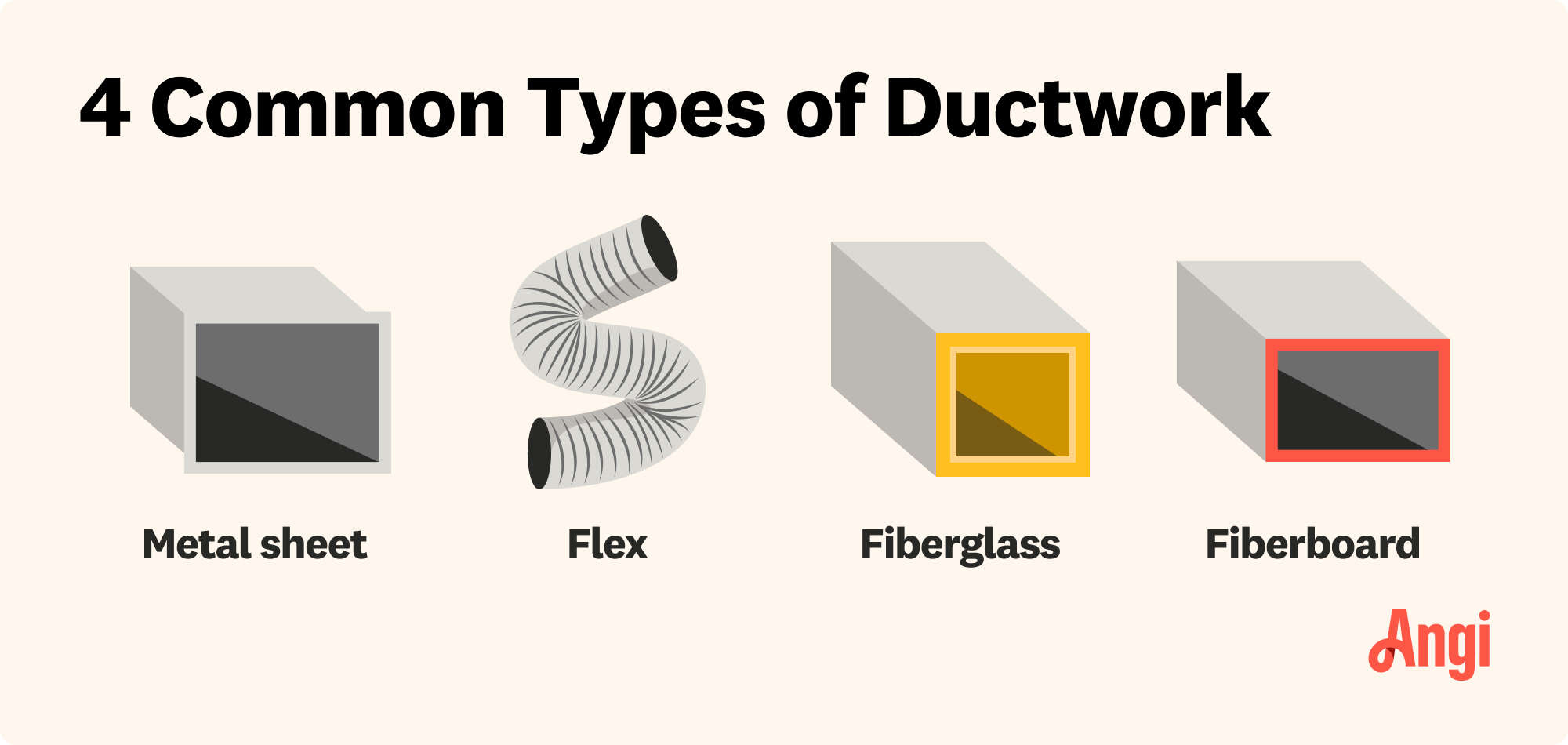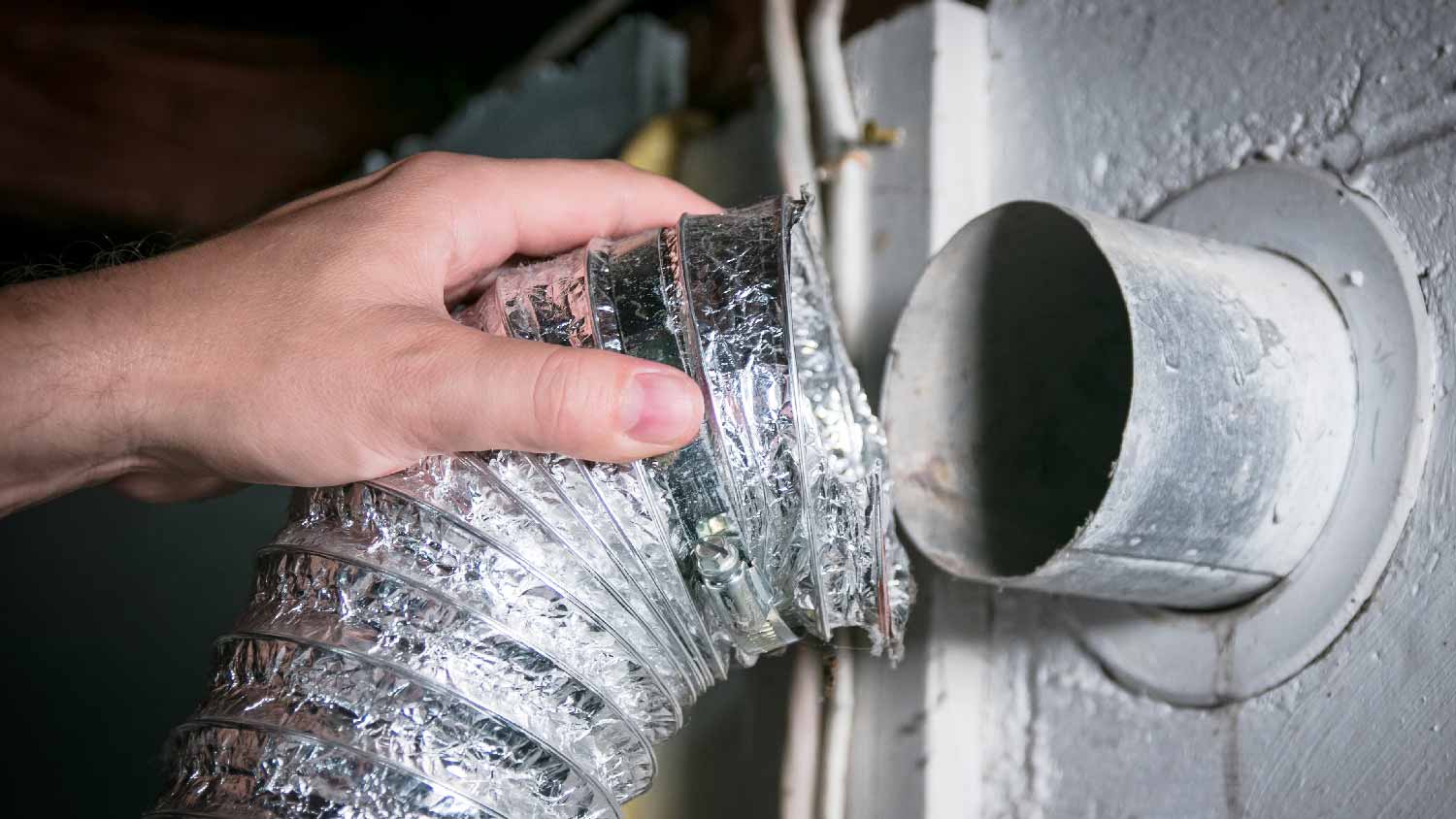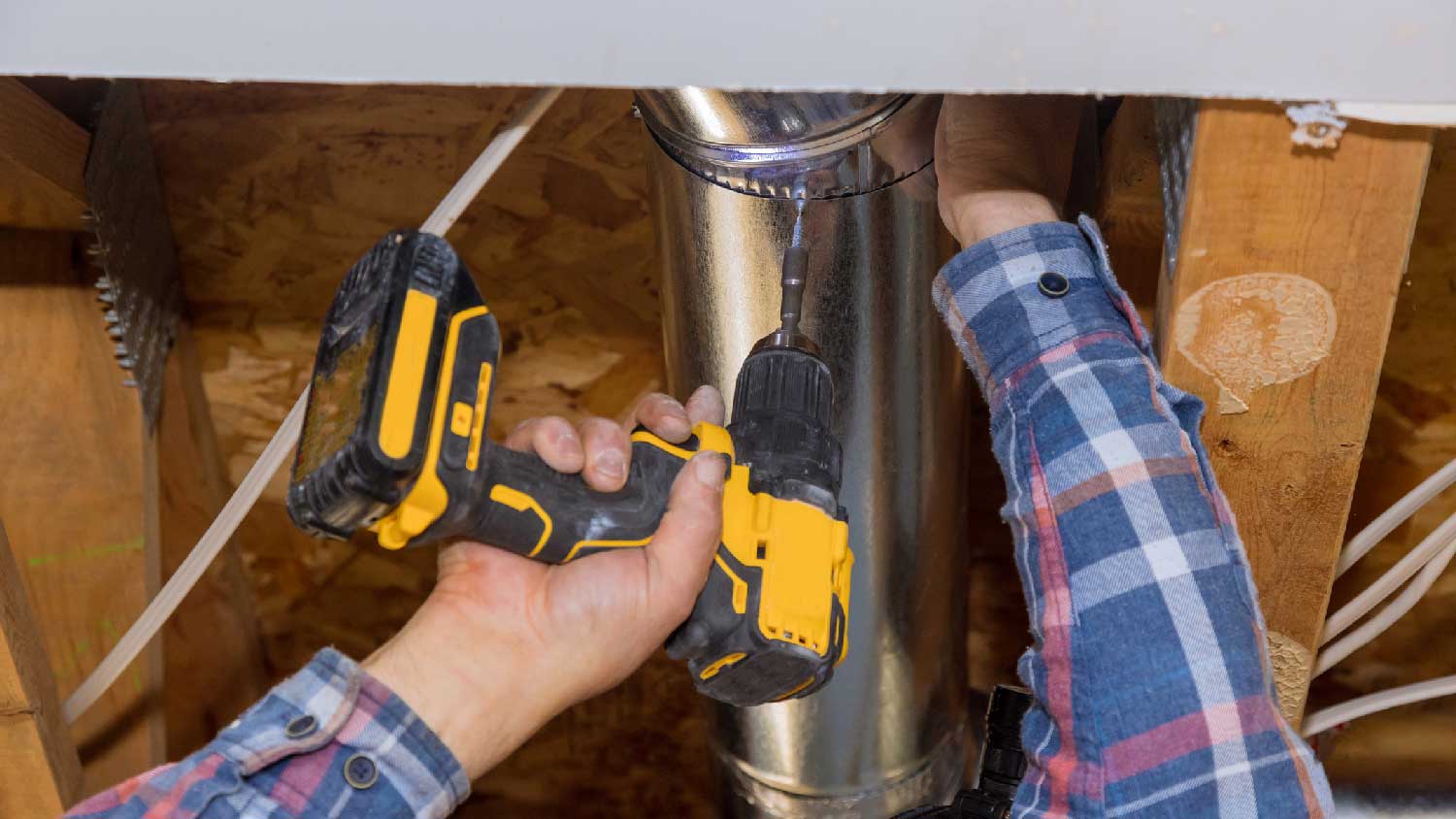Can You Use Flexible Ducts for Your HVAC System? Pros and Cons to Consider
Using flexible ducts could be a huge flex, but you should weigh the pros and cons


Flexible ducts consist of a coiled metal wire and a flexible plastic material.
In comparison to traditional ductwork, they’re cost-effective, easier to install, and aren’t as noisy.
Flex ductwork is prone to issues and has a shorter lifespan.
Using flexible air ducts for HVAC systems has become a popular alternative to metal air ducts because they’re easier and less expensive to install. Still, metal ductwork remains a timeless option due to its durability.
So, which type is best for your HVAC system? The answer will depend on your unique needs and preferences, plus the recommendation from your duct installer. Carefully consider the pros and cons of flexible ducts with the help of this guide.
What Are Flexible Ducts?

Ductwork is the system of tubing that circulates air throughout your home. It is an essential part of your HVAC system, which is why choosing the right HVAC duct type is vital.
Flexible ducts, also known as flex ducts, are made up of a coiled metal wire and a flexible plastic material. It’s covered by an added layer of fiberglass for insulation and a vinyl or foil jacket. True to its name, flex ducts can easily bend around objects and fit into tight spaces.
| Pros | Cons |
|---|---|
| Cost-effective | Requires more energy |
| Easier and quicker installation | Not as durable |
| Less noise | Susceptible to issues |
| Fewer leaks | Shorter lifespan |
Pros of Flexible Ducts

Consider the advantages of installing flexible ducts in your HVAC system.
Lower Installation Costs
Flexible ducts are made of less expensive materials and take less time to install than metal ducts, resulting in lower installation costs. This duct type also requires less skill and energy to install, which saves on labor costs.
Easier Installation Process
Flexible ducts are adaptable and can easily fit into tight spaces. Your duct installer can cut flexible ducts to accommodate any area of your home. Thanks to this feature, it’s easier to measure and place flexible ducts, making for a much easier and quicker installation process.
Less Noisy
Metal ducts are prone to vibrations, whistling, and other noises. Flex ducts, on the other hand, absorb sound rather than conducting it. This benefit reduces unwanted noises throughout your home.
Fewer Leaks
Flexible ductwork comes with seamless insulation and doesn’t require any sealant in its original form, whereas metal ducts’ seams must be sealed. As a result, flex ducts are less likely to leak heated or cooled air, so you won’t need to test ductwork for leaks as often.
Cons of Flexible Ducts
Consider the disadvantages of installing flexible ducts in your HVAC system.
Higher Energy Costs
Since flex ducts must bend around obstacles and fit into tight spaces, airflow can become restricted. That means more energy is required to circulate air through your home, which can lead to more expensive energy bills.
Less Durable
Unlike metal ducts, which are extremely durable, flexible ducts are made with less durable materials. The use of less expensive duct materials can lead to wear and tear as time goes on. That means you’ll likely have to repair and replace parts of the ductwork more often.
More Susceptible to Issues
Flex ducts are more prone to tearing, twisting, kinking, compression, and other issues. Pests, such as rodents, squirrels, and raccoons, can also chew through ductwork, leading to even more serious problems.
Shorter Lifespan
When properly cared for, metal ducts can last more than 25 years. On the other hand, flex ducts don’t last more than 20 to 25 years. However, proper installation and regular maintenance can maximize the lifespan of your flex ducts.
Alternatives to Flexible Ducts

After weighing the pros and cons of flexible ductwork, you may be interested in exploring alternatives that could be an even better fit for your HVAC system. Of course, metal ductwork is the most common type because it’s made of sturdy materials, like galvanized steel or aluminum, and it’s a long-lasting and durable choice.
Fiberboard and fiberglass are two other options. Fiberboard is made of resin-bound fiberglass strands and can maintain temperatures for longer periods of time. However, it can also be harder to keep clean. Fiberglass is great at reducing heat loss and noise, but it may not be the most durable option.
Are Flexible Ducts Right for Your HVAC System?
Whether flexible ductwork is right for you will depend on factors such as your budget, the size and layout of your home, and your unique heating and cooling needs. If you’re looking for an affordable, easy-to-install option, flex ducts may be the ideal choice.
It’s also possible to use metal and flexible ducts for your HVAC system; this way you can reap the benefits from both types of ductwork. Consult with a duct installer near you for guidance. A pro can take into consideration your specific needs and wants, and then provide the right expertise and service for you.
How Much Does It Cost to Install Flexible Ducts?
Flexible ductwork is one of the cheapest and easiest options to install in your house. Flex duct material costs $1 to $3 per linear foot when non-insulated and $2 to $4 per linear foot with insulation. Labor for professional installation costs between $5 and $10 per linear foot, bringing the total cost to $6 to $14 per linear foot. That comes to an average cost of $1,000 to $1,500 to install flexible ductwork in a standard-sized house.
DIY vs. Hiring a Pro
Installing your own ductwork might sound like an easy way to save money, but it’s best to leave the installation to the pros unless you have extensive ductwork experience. While flex ductwork is one of the easiest types to install, it’s still a tricky process that can lead to serious issues if installed improperly. Those issues include everything from air leaks and decreased energy efficiency to damaged HVAC systems and failed home inspections. As a result, we recommend contacting an HVAC technician or an air duct installer in your area.
Frequently Asked Questions
While metal ducts are known for being the most durable choice, flex ductwork is a safe alternative with a host of additional benefits. The key to installing flexible ducts is to make sure they’re properly sized and installed. For optimal results, it’s always best to hire a duct installation pro who has extensive experience with flex duct installation.
Unless your metal ducts have rusted out, it may be best to reinsulate the existing metal ductwork rather than replace it with flexible ducts. However, if your existing metal ducts weren’t installed properly, your home will benefit from replacing them with properly sized and installed flex ducts. Talk to an HVAC professional to determine what’s best for your system.
Flexible ductwork lasts 15 to 25 years on average. The exact lifespan depends on the installation method, maintenance, and the quality of materials. It’s worth hiring a professional to install flex ducting because it ensures you’ll get the best performance and longest lifespan. Tube kinking, heavy condensation, and poor airflow shorten flex duct’s life expectancy.





- Furnace Repair
- Air Conditioning Repair
- HVAC Repairs
- Furnace Installation
- Wood & Pellet Stove Repair
- Dehumidifier & Humidifier Repair
- Heat Pump Companies
- Swamp Cooler Repair
- Wood Stove Services
- HVAC Companies
- Commercial A/C Repair
- Geothermal Installation
- Air Conditioning Installation
- Boiler Repair
- 24 Hour Furnace Repair
- Geothermal Repair
- Heat Pump Repair
- Humidifier Installation
- Thermostat Repair
- Thermostat Installation
- Nest Installation
- Heating & Cooling
- Heating Repair
- Furnace Cleaning
- Furnace Tune-Up
- HVAC Technicians
- Subcontractors
- Furnace Maintenance
- Plumbing & Heating Companies
- Wood Stove Inspection
- Mini Split Installation
- Wall Heater Repair
- Duct Installers
- 4 Types of Ductwork and How to Choose One
- What Are Air Ducts? Understanding Your Home’s Ductwork
- When Is Insulation Required on Air Ducts? What You Need to Know
- How Long Does Air Duct Cleaning Take? 4 Factors That Impact the Time Frame
- Why Does My Ductwork Make Banging Noises?
- How Often Do I Need to Clean Air Ducts in My HVAC System?
- Why Your Ductwork Is Popping When Your Furnace Turns Off (And How to Fix It)
- Condensation on Ductwork: Causes and Potential Solutions
- Air Duct vs. Air Vent: Learn the Differences Between These HVAC System Parts
- DIY Air Duct Cleaning Tools and How to Use Them

 - Derek Rose.png?impolicy=thumbnail)








